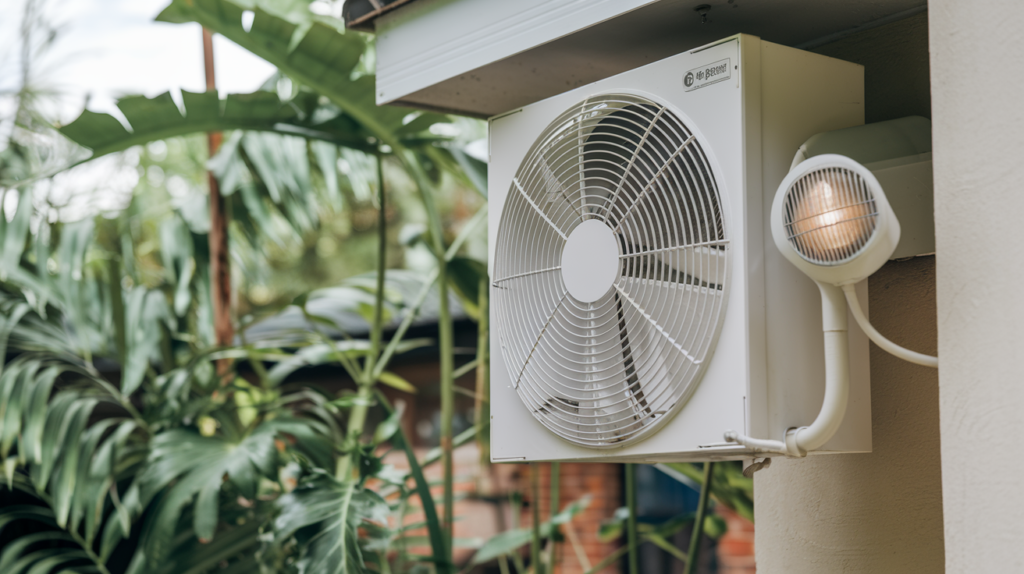Let’s be real—no one wants their bathroom to double as a tropical rainforest. Sure, steam sessions are great at spas, but when your walls start growing their own ecosystem? Hard pass. If your bathroom feels like a sauna gone rogue, chances are your exhaust fan venting isn’t cutting it. Lucky for you, we’ve got the lowdown on how to fix it before your shower curtain starts sprouting mushrooms. And hey, if you’re in Los Angeles and this all sounds like too much work? Our pals at America Green Builders (local legends in bathroom remodels and so much more) are just a call away.
Why Proper Venting is a Big Freakin’ Deal
Ever walked into a bathroom that smells like last week’s gym socks? That’s mold waving hello—and it’s not just gross. Poor venting traps moisture, warps paint, and turns drywall into a science project. Worse, it’s a one-way ticket to respiratory issues. We’ve seen it all—from peeling wallpaper in Mission Hills to soggy ceilings in Santa Clarita. The fix? A well-vented exhaust fan that actually ventilates instead of just humming like a lethargic bumblebee.
Your Venting Options: Because One Size Doesn’t Fit All
Not all vents are created equal. Let’s break down your choices, from “why didn’t I think of that?” to “call a pro ASAP.”
1. Through the Roof: The Gold Standard
- Pros: Directs moisture straight outside, ideal for cold climates (goodbye, ice dams!).
- Cons: Requires cutting into your roof. Best left to building contractors unless you’re very handy.
- Cost: $300–$600 (depending on roof complexity).
2. Soffit Vents: The Middle Child
- Pros: Easier to install than roof vents. Vents moisture under eaves.
- Cons: Can suck humid air back in if not insulated properly.
- Price: $200–$400.
3. Wall Vents: The Space Saver
- Pros: Great for bathrooms without roof/attic access. Simple for outdoor living contractors to install.
- Cons: Visible on exterior walls (aesthetic buzzkill).
- Cost: $150–$350.
4. Window or Ductless Fans: The “Quick Fix”
- Pros: Cheap, no ductwork needed.
- Cons: Filters need constant cleaning. Basically a glorified air freshener.
- Price: $50–$150.
FYI: Here’s a quick table to compare your options:
| Vent Type | Best For | Avg. Cost | DIY-Friendly? |
|---|---|---|---|
| Through the Roof | Cold climates | $300–$600 | No 🙅♂️ |
| Soffit Vent | Easy access homes | $200–$400 | Maybe 🤷♀️ |
| Wall Vent | Space constraints | $150–$350 | Yes 👍 |
| Window/Ductless | Rentals, quick fixes | $50–$150 | Yes 👍 |
“But How Do I Pick the Right Contractor?” (Glad You Asked)
Let’s face it: Googling “general contractor near me” is like swiping on Tinder—you might strike gold, or you’ll end up with a horror story. Here’s our cheat sheet:
- Check Reviews: If their Yelp page looks like a Stephen King novel, run.
- Ask About Experience: Bathroom venting isn’t brain surgery, but it’s close. America Green Builders (shameless plug!) has handled everything from kitchen remodels in Los Angeles to garage conversion contractor projects in Santa Clarita. They know their ducts.
- Get Multiple Quotes: Because “cost” shouldn’t be a four-letter word.
Cost Breakdown: What’s Really in Your Wallet?
Venting isn’t just about buying a fan and calling it a day. Here’s what jacks up the price:
- Labor: Pros charge $70–$150/hour.
- Materials: Ducting, insulation, vents—it adds up.
- Permits: Yep, your city might want a cut.
Pro Tip: If you’re already planning a bathroom remodel or room addition, bundle the venting work. Companies like America Green Builders often offer discounts for bigger projects.
3 Burning Questions (That Won’t Make You Sound Clueless)
1. “Can I DIY This?”
Sure—if you’re cool with potential leaks, mold, and voided warranties. For anything beyond a ductless fan, home improvement services are worth the splurge.
2. “Why Does My Vent Smell Like Wet Dog?”
Congrats, you’ve got a clogged duct! Clean it or hire a construction company to snake it out.
3. “What’s the Worst That Could Happen?”
Let’s just say your home contractors might discover a family of raccoons in your attic. True story.
Final Thoughts: Keep the Sauna for the Spa
Venting your bathroom isn’t glamorous, but neither is scrubbing mold off grout at 2 a.m. Whether you DIY or call America Green Builders (seriously, their reviews are chef’s kiss), just get it done. Your lungs—and your future self—will thank you.
Need a hand? Hit up America Green Builders for all things vents, kitchen remodels, or turning that dusty garage into a sweet man cave. Because life’s too short for musty towels.





